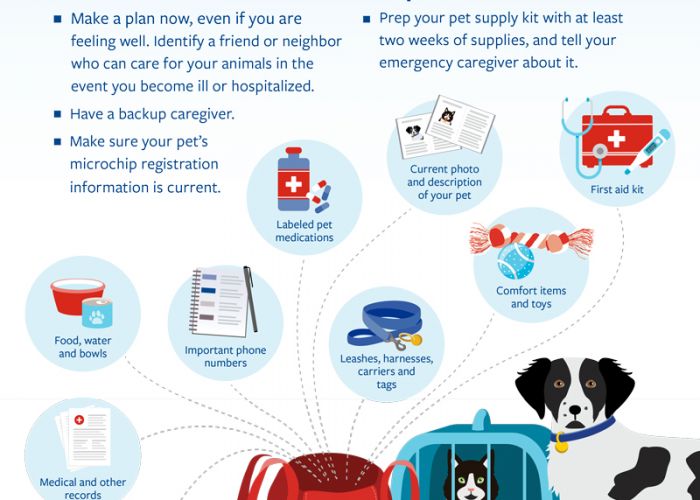Taxing matters
An accountant explains deductions for animal rescue activities

If you volunteer for an animal rescue group, you’re probably too focused on finding foster homes, arranging transports or coordinating adoption fairs to worry about personal tax write-offs. Rescuers tend to be “all-in”—investing significant amounts of their time and money into the effort while overlooking or remaining unaware of existing opportunities for tax breaks.
But rescues, humane societies and other animal welfare groups are among the nonprofit organizations that have been recognized as tax exempt under Internal Revenue Code Section 501(c)(3), which means that people can deduct their charitable contributions (whether in the form of cash, property or unreimbursed expenses) to such organizations. You’re already giving your all for the animals; to help you get back something more than personal satisfaction, let’s discuss some of the tax benefits that could allow you to keep more money to spend on yourself or the animals.
Going (and getting credit for) the extra mile
You’ve watched your vehicle’s odometer tick upward as you shuttle animals around on behalf of your rescue group. But did you realize that the costs of mileage and travel related to your volunteer work may be deductible for tax purposes?
People who itemize deductions on their tax returns can take a charitable contribution deduction for travel while performing volunteer services. For car travel, you can deduct actual oil and gas costs or you can take a rate-per-mile deduction for miles driven. (For 2017 and 2018, the rate is 14 cents per mile.) To qualify, the travel must be necessary to perform your service for a qualified charity with no substantial element of recreation, personal pleasure or vacation.
Say your local humane society asks you to drive a dog across the state for handoff to another volunteer who will deliver the pooch to another shelter. Your mileage in performing this task qualifies as a charitable contribution deduction at the IRS-set rate, but this deduction is not available if you carry the animal as part of a personal vacation.
Other transportation costs associated with air, rail or bus transportation—as well as the costs of tolls, taxis, parking, lodging and meals—can also be deducted as part of travel on behalf of a charity.
You must keep records to support your deductions, so hang on to your receipts and logs of trips describing the dates, times, routes, mileage and costs incurred (mobile apps for tracking mileage and other expenses can be useful).
Training and conference costs
Generally, volunteers from qualified nonprofits can deduct costs incurred “in the performance of services” as a volunteer, provided the charity doesn’t reimburse these costs. One condition to meet that requirement is that the person must be acting on behalf of the organization and must not be acting alone.
This distinction is important if you undertake training or travel to represent the organization at a conference or other event. If you are selected by a charity to represent it, or are asked to take training to improve skills, the costs of doing so may be deductible, including both entrance and enrollment fees, as well as travel costs. However, if you attend without being asked by the charity or without coordinating with it, the costs may not be deductible.
To support the deduction, you should keep copies of documents showing you were selected to attend, as well as agendas and materials from meetings and the normal receipts documenting your costs.
Costs of fostering
People who foster animals often incur outof- pocket expenses. The animals remain the property of the rescue group while being fostered, so any costs incurred by the foster family are undertaken to support the charity and its mission. Thus, the costs of food, veterinary care and other support and maintenance may be deductible if they are not paid or reimbursed by the charity.
In 2011, the U.S. Tax Court heard the case of Jan Van Dusen, who deducted the costs associated with fostering cats. The IRS had denied the deductions and, as Van Dusen told some journalists, treated her like a “crazy cat lady.” This “cat lady” happened to be an attorney and took her case all the way to the Tax Court. And, for the most part, she prevailed.
The court based its ruling on the following facts: (1) The cats in question were cared for in Van Dusen's home; (2) she fostered as a volunteer for a charitable rescue organization; and (3) foster care was an important part of the mission of the rescue organization.
This case includes a couple of interesting details. First, the court noted that foster animals are inherently different from pets, with the costs of pets being nondeductible. While the court did not provide clear definitions of pets and foster animals, Van Dusen identified several of the animals as pets and the remainder as fosters, and the court accepted that distinction. Second, the court noted that Van Dusen was loosely involved with the rescue organization but made many fostering decisions on her own, without specific direction from the rescue organization. However, the court went to great pains to stipulate that Van Dusen was, in fact, a volunteer with the rescue, lending credence to the fact that foster volunteers can still be considered as supporting the mission of a rescue without it heavily directing their actions.
The court allowed the deductions related to her foster cat expenses, but it denied the portion of costs related to her pets as nondeductible. Of particular note, the court called out pet food, veterinary costs, pet supplies and items such as paper towels and garbage bags as potentially deductible. The court disallowed combined costs that were related to both her personal pets and foster cats, such as discount club membership fees and vacuum repair fees, because it had not been substantiated how much was for personal use and how much was related to fostering.
An important factor in the court’s ruling seems to be that Van Dusen had established an ongoing volunteer engagement with one or more rescue agencies. One of the IRS’s core challenges to her deductions was that she did them as part of her personal community activities, not in coordination with a specific charity for its benefit. Also, she was able to provide receipts, canceled checks and other documentation to support the costs that the IRS had initially rejected. Further, the court noted that costs related to foster animals could be separated from those of pets, thus removing one of the obstacles to deductibility in the eyes of the IRS.
Where Van Dusen failed to prevail was in the case of costs that exceeded $250 each. The law requires that for any donation of $250 or more, the donor must have obtained a timely acknowledgment letter from the charitable organization. These larger costs, which included veterinary costs incurred by the volunteer, cannot be deducted without this letter, even if receipts or canceled checks are otherwise available.
If you’re a foster volunteer for a nonprofit animal group or municipal shelter, this case provides some important lessons. Ideally, you want to keep the expenses for your personal pets separate from those you incur for your foster animals. For example, you could have food and supplies that you purchase and use solely for foster animals, with separate food and supplies maintained for your pets. Also, for any costs of $250 or more, you could provide a list of all such expenses, copies of receipts and explanations of costs and have them acknowledged in a letter by the charity in a way that meets the large-donation substantiation requirements. To be safe, you should discuss these deductions with your tax return preparer.
[Editor's note: A reader pointed out that Van Dusen was convicted of animal cruelty in 2014. We regret the unintentional omission but believe her tax case is a valuable example of volunteers' right to deduct expenses incurred over the course of volunteering.]

Is incorporation for you?
The tax breaks outlined above assume that your volunteer work is being done on behalf of a registered tax-exempt 501(c)(3) nonprofit or municipal shelter. You may be spending significant amounts of money feeding community cats in your neighborhood, or you might be part of an informal network of animal lovers who take in strays and use their own funds to pay for the animals’ care. Unless you’re doing this work on behalf of a bona fide nonprofit, your expenses may not be deductible.
That’s why, as your involvement and expenses increase, you might want to consider incorporating those efforts into a charitable organization. (Alternatively, you may want to combine forces with an existing nonprofit in your area. For example, a local humane society may be interested in making your trap-neuter-return efforts a new program of the organization.)
Achieving charitable status under the tax code carries a number of benefits, including tax deductions for donations and unreimbursed out-of-pocket costs, sales tax exemptions on purchases, access to grant and foundation funding, and the ability to solicit public donations.
Charitable status is not to be entered into lightly: It brings a significant amount of complexity and legal oversight, but it can be very financially beneficial to the funders and the rescue program.
The process of turning a loose rescue effort into a charity looks like this: (1) form a charitable corporation, working with a knowledgeable attorney; (2) transfer ownership of all property and animals to the corporation; (3) seek IRS recognition of tax exemption by filing Form 1023; (4) open bank accounts and begin accounting for all expenses and receipts through the books of the new corporation; and (5) meet your state’s charitable registration and filing requirements.
One of the greatest difficulties of making the transition from being a “person rescuing animals” to being “a volunteer rescuing animals for a charity” is the formality associated with handling the funds and performing bookkeeping. Oversight must be performed by a board of directors, not just by a single person. There are also documentation requirements for donations, as well as tax returns, annual filings and other requirements.
That said, when you consider all the costs incurred by your supporters (including not just cash donations but also supplies, sales taxes, mileage and other expenditures), the ability to deduct these costs as a charitable contribution can leave substantial extra money on the table to fund more of your good work.
Changes in tax laws
Before you invest a lot of time in tracking your personal animal rescue costs, you’ll want to get an idea of whether it makes sense to itemize on your taxes. In 2018, tax laws will be very different for most people. In particular, the amount of deductions needed for individuals to itemize on their tax returns has increased dramatically, to $12,000 for single taxpayers and $24,000 for married couples filing jointly. In addition, many have lost full deductibility of state taxes, making it harder to meet this threshold. But if you’re actively involved in animal rescue, the costs can be substantial, and doing what is necessary to obtain deductions for these costs can save you a significant amount of money, which you can reinvest in your lifesaving work.







